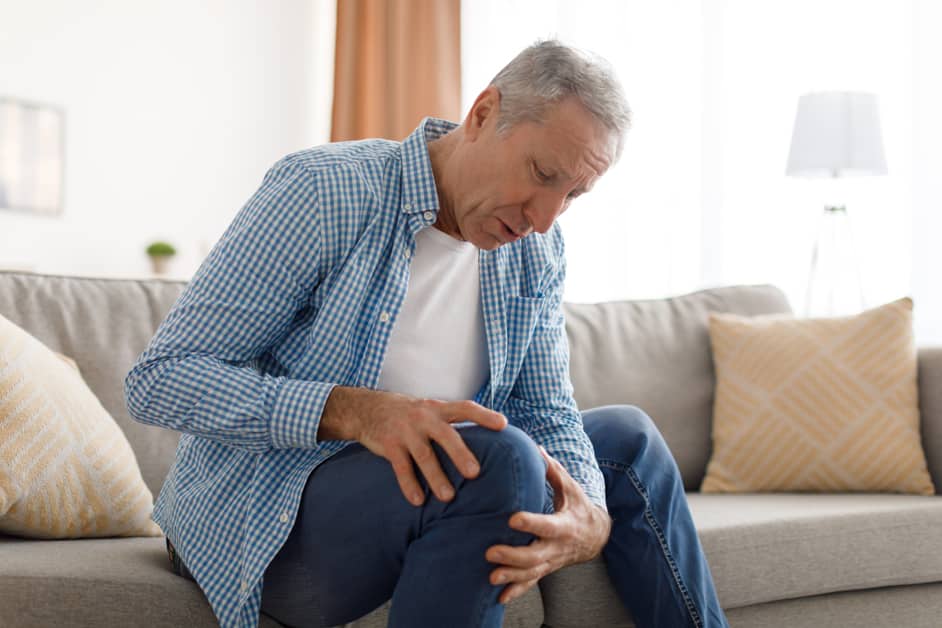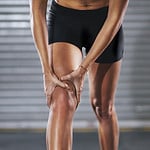Introduction
Knee pain is an all-too-familiar problem. It can be normal, but continuous pain may suggest something more serious. Arthritis is a main source of knee discomfort.
This guide will explain the types of arthritis, the signs to look out for, and how to handle it with therapy or lifestyle changes.
Understanding the correlation between arthritis and knee pain can help you find out if you are in danger of developing arthritis-related knee problems. You can then take the best steps to tackle any medical issues.
What is Arthritis?
Arthritis is a condition that affects joints, making them painful and swollen. It is also called degenerative joint disease. This usually happens because of the wear and tear of joint cartilage over time. Arthritis can affect any joint but is most often linked to the knees.
In this article, you will learn about the correlation between arthritis and knee pain and what you should know about it.
Types of Arthritis
Arthritis is a term describing joint inflammation. It may impact one or multiple joints around the body, causing pain and disability. Knees are commonly affected. There are multiple types of arthritis with individual symptoms and treatments.
The types of arthritis affecting the knee can be:
- Osteoarthritis. Caused by wear-and-tear of the cushioning cartilage. Symptoms are pain, stiffness, reduced movement, swelling.
- Rheumatoid Arthritis. An autoimmune disease where the body’s tissues are attacked. Swelling around multiple joints and morning pain which improves during the day.
- Post Traumatic Arthritis. Caused by a traumatic event such as injury or surgery. This can make the knee vulnerable to arthritis.
- Infectious Arthritis. Caused by an infection in the knee joint. Symptoms may include redness, severe pain, and fever.
It is important for people with chronic knee pain to discuss potential causes with their doctor. This will help them create a treatment plan based on their personal needs.
Symptoms of Arthritis
Arthritis is a common condition linked to knee pain. It causes inflammation of the joints, with symptoms depending on the type and severity. These might include joint pain, swelling, stiffness and reduced movement, plus fatigue, fever, loss of appetite and weight loss.
Two main types exist: osteoarthritis (OA) and rheumatoid arthritis (RA). OA is often caused by age, trauma, obesity or mechanical stress on certain joints, such as the knee. RA is an autoimmune disorder, producing inflammation across the body, including the knee joint lining.
No matter your type of arthritis, it’s important to see a doctor. They can diagnose any conditions causing knee pain. Treatment typically includes:
- medications (e.g. ibuprofen),
- physical therapy, and
- lifestyle changes to help manage symptoms.
How Does Arthritis Affect the Knees?
Arthritis is a frequent reason for knee pain. It’s an irritation of the joints which can cause inflating, tightness, and discomfort around the knee joint. Osteoarthritis is the most usual type of arthritis that affects the knees. This kind of arthritis develops when the protective cartilage on the end of the bone wears away over time. This leads to the bones rubbing together in the joint.
Let’s look at how arthritis can create knee pain, and how it can be dealt with properly:
Osteoarthritis of the Knee
Osteoarthritis of the knee is a degenerative joint disease caused by wear and tear on the cartilage. It usually occurs in people over 50 and risk factors may increase the chance of developing it. These include obesity, injury, and repetitive strain. Women are more likely to have this type of arthritis due to hormones.
Symptoms range from mild discomfort to severe pain. This can include stiffness upon waking or after sitting for a long time. As it progresses, it may cause loss of function and chronic pain.
Treatment strategies vary based on severity. These may include:
- Lifestyle changes
- Medications
- Injections
- Physical therapy
- Braces
- Weight loss
- Surgery
Low-impact exercises like swimming and yoga can help reduce stress on arthritic joints.
Rheumatoid Arthritis of the Knee
Rheumatoid Arthritis (RA) is an inflammatory autoimmune disorder. It targets the joints, including the knees. Women are more likely to get it than men. It usually occurs between ages 40 and 60. Joint damage from RA affects both sides of the body. It can lead to deformity.
Symptoms of RA include pain, swelling, warmth and stiffness in the knee joint. Moving and walking can be difficult because of pain and reduced flexibility. Diagnosis is based on a physical examination. X-rays may be used to confirm diagnosis and measure cartilage destruction.
There is no cure for Rheumatoid Arthritis. People manage it with drug therapy. Anti-inflammatory drugs and steroids reduce symptoms. Disease-modifying antirheumatic drugs (DMARDs) can be taken orally or injected into damaged joints. Heat or cold application may help reduce discomfort. Physical therapy exercises can help to keep joints strong and improve mobility. In severe cases, surgery may be needed to replace or fuse the knee.
Treatment Options
Feeling overwhelmed searching for the correct treatment for knee pain caused by arthritis? Pain levels can vary from minor to major. There are several solutions like:
- Lifestyle adjustments
- Medicine
- Physical therapy
- Injections
- Surgery
Discover numerous treatments in this area to help manage your arthritis-related knee pain.
Non-Surgical Treatment
Knee pain due to arthritis needs treatment to soothe discomfort and avert additional joint harm. Treatment without surgery includes changes in lifestyle, physical therapy and drugs.
Lifestyle Changes: To decrease inflammation, health must improve and knee strain minimized. Weight reduction is essential for overweight individuals as extra weight worsens the joint pain and swelling. Strolling and swimming help reduce pain and strengthen the affected joint.
Physical Therapy: Exercises instructed by a physical therapist can increase range of motion and reduce strain to the knee. Ice packs or heat pads may also minimize inflammation.
Medications: Nonsteroidal anti-inflammatory drugs (NSAIDs) like ibuprofen or naproxen reduce joint inflammation and provide temporary pain relief. To protect the stomach, take these drugs at mealtime or with a snack. Other drugs may be corticosteroids, disease-modifying antirheumatic drugs (DMARDs) or injectable joint lubricants such as hyaluronic acid (HA).
Surgical Treatment
Sometimes, when treatments fail and there’s joint damage, surgery may be necessary. Procedures can range from minimally invasive to extensive. Here are some common treatments:
- Arthroscopic debridement: A minimally invasive procedure to remove particles like damaged tissue, bone spurs and cartilage fragments.
- Meniscus repair/meniscectomy: This rubbery disc can tear if it’s overly stressed. If the injury is severe, it might need to be repaired, or taken out to reduce pain and stability.
- ACL reconstruction: This repairs/replaces torn ligaments. New ligaments are created with a graft from another part of the body, and surgeons clean out any damaged tissue around the knee.
- Total knee replacement: Also known as knee arthroplasty, this replaces worn cartilage with an artificial implant. It can reduce pain and improve mobility for those with severe arthritis who haven’t had success with other treatments.
Conclusion
To finish, arthritis and knee pain are related. Knowing the type of arthritis and how it affects your knees is important for planning a good plan to control symptoms. Unfortunately, there is no cure for arthritis. However, treatments can help with the pain, decrease swelling, and make movement easier.
These treatments can be:
- Exercise
- Losing weight
- Medicines
- Physical therapy
Talking to your doctor will help you figure out the best way to handle your condition and make life better.
Frequently Asked Questions
Q. What is arthritis?
A. Arthritis is an inflammation of the joints. It can cause pain, stiffness, and swelling in the joints, which can lead to reduced range of motion and difficulty with daily activities.
Q. How does arthritis cause knee pain?
A. Arthritis can cause the cartilage around the knee joint to become damaged and worn down, leading to pain, swelling, and stiffness. As the cartilage wears down, it can also cause the bones to rub against each other, leading to further pain.
Q. How can I reduce knee pain from arthritis?
A. There are a number of treatments available for arthritis-related knee pain, including physical therapy, medications, lifestyle changes, injections, and surgery. It is important to speak with your doctor to determine the best treatment plan for you.





